Traveling by ourselves, we were able to see things we missed in 2018, especially Gaochang ancient city and the Flame Mountain. The only problem was getting there. Fortunately a young man at the hotel was able to translate via his phone and, having called a taxi, told the driver where we wanted to go. A very jolly and friendly man who offered to drive us to both sites for 300 yuan (£32) which I thought was really good value considering it would take him half a day. Gaochang is much older than Turpan and was a major stopping point on the Silk Road by the 7th century. The Chinese monk Xuan Zang stopped there in 629 and gave sermons in the Grand Temple before continuing to India to collect Buddhist texts which, after 13 years of travel through some of the most inhospitable terrain on earth, he translated in the Great Wild Goose Pagoda in Xian. There is a huge statue of him before the Visitor Centre. We got taken round the ruins in an open-air shuttle vehicle with three Koreans who were making a film for television. The ruins are very extensive, and the key parts are the city walls, the “Eighty-Convex Corner Pagoda” built during the Qocho Uighur period (13th-14th century) and the Grand Temple. We then drove to the “Flame Mountain Scenic Spot” which was full of stalls selling drinks and tourist tat. We can’t get any closer to the mountain because, I’ve read, it is so hot that people get sunstroke very quickly. Apparently, at certain times of the day and certain times of the year, the heat coming off the red sandstone is reflected by the sun’s rays so it looks like the mountain is on fire. While the stone at Flame Mountain is a bright red, it changes to a mixture of purple, grey, orange and white closer to Turpan while the higher slopes are are strange greeny-grey. They must be picking up some moisture from the clouds and supporting a sparse vegetation. There is a much higher range of mountains in the background. The temperature at the Scenic Spot was only a mere 46 degrees so we didn’t see any flames, and we went back to the hotel. I tried to give the driver a £10 tip but he refused to take it and offered to take us to the train station tomorrow. I didn’t like to ask him to drive us the 495 miles to Dunhwang.
There is very little left of the “Khan Fortress” at Gaochang. It was where the King of Gaochang, Qu Wentai, lived and Xuan Zang would have stayed. The explanation board says “In 627, Xuan Zang went to Fianzhou to obtain the Mahayana Buddhist scriptures. In 629, when Qu Wentai heard that Xuan Zang ws about to arrive at Yiwu (now Hami) he immediately sent someone to greet him. Xuan Zang abandoned the original pan and turned westwards to Gaochang. Buddhists had been prevalent in Gaochang for a long time and therefore Xuan Zang was regarded as a guest and placed in an “important place” to expound the texts of Buddhism. In 640, when the Tang Dynasty pacified Gaochang, Qu Wentai died of panic The following summer, Xuan Zang left India and returned to China. In 645, he completed the writing of the Great Tang Records on the Western Regions. In 1981, a fragment of the records was unearthed in the Tuyuk Grottoes, which is said to be the earliest discovered manuscript”.
There are remains of terraced houses which are described as “semi-subterranean”, so people could live in the cooler area below ground during the heat of the summer. Fireplaces have been found with cooking stoves and heatable brick beds in the style of the Chinese kang. They date to the Qocho Uighur period of 13th-14th century. The houses are located in a square area with all sides 200 metres long.

Xuan Zang
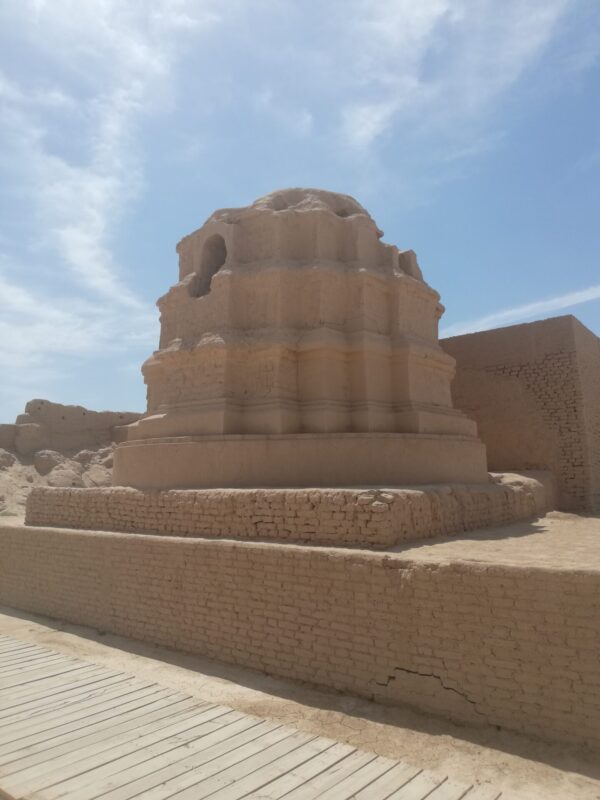
Pagoda


City walls

Khan Fortress

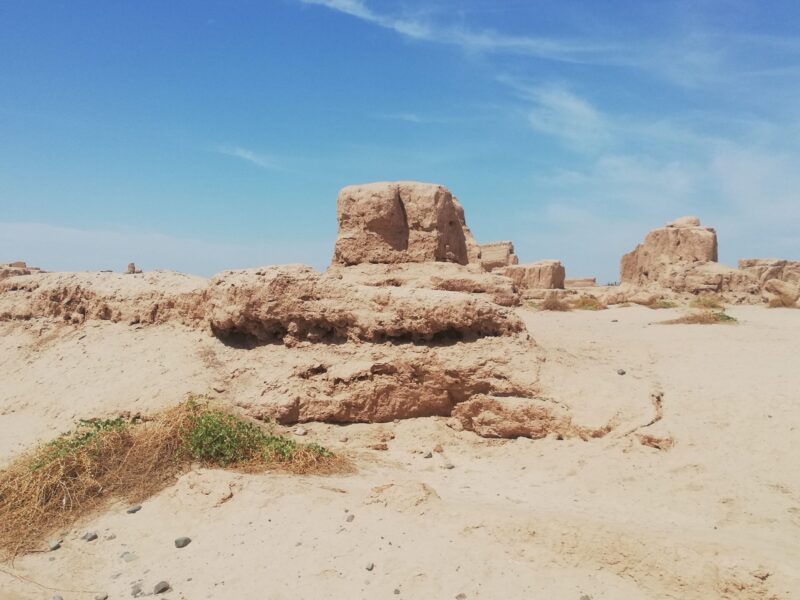







The Grand Temple
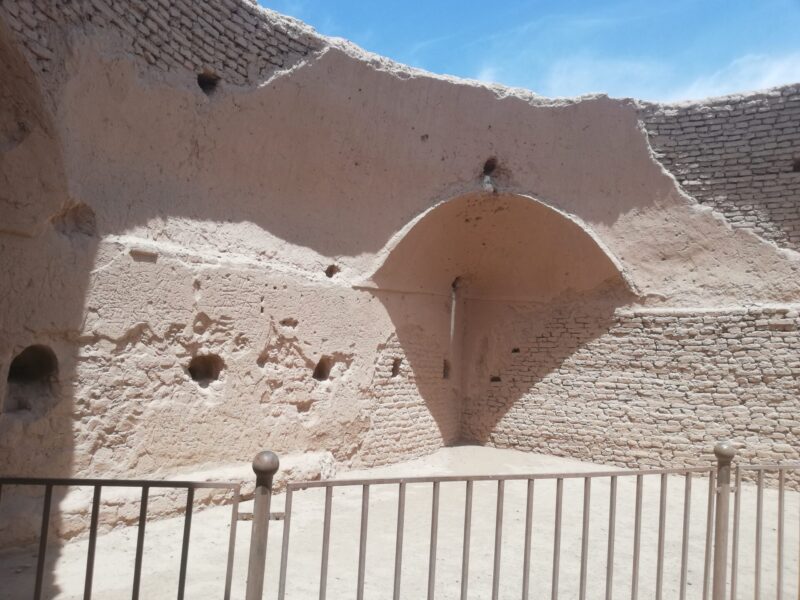

Emin Khoja, 1694-1777

Jiang Xingben, ?-643
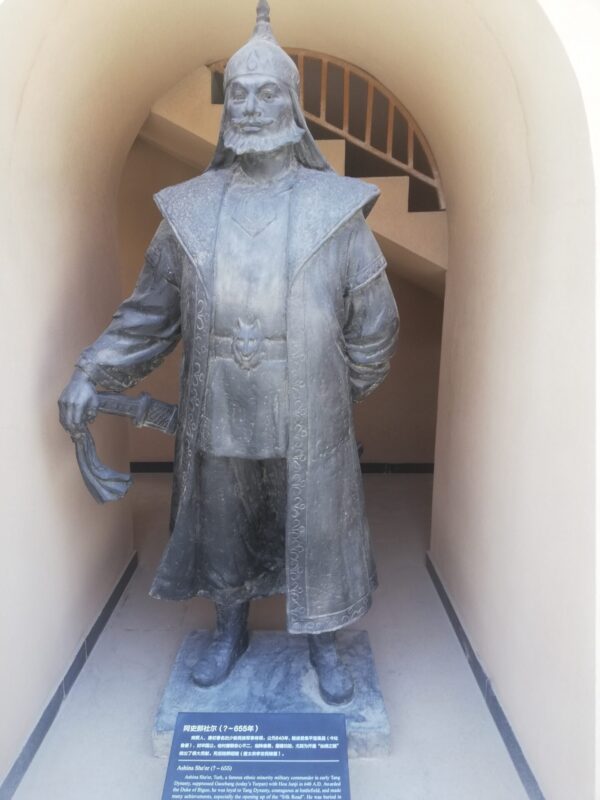
Ashina Sha’er, ? to 655
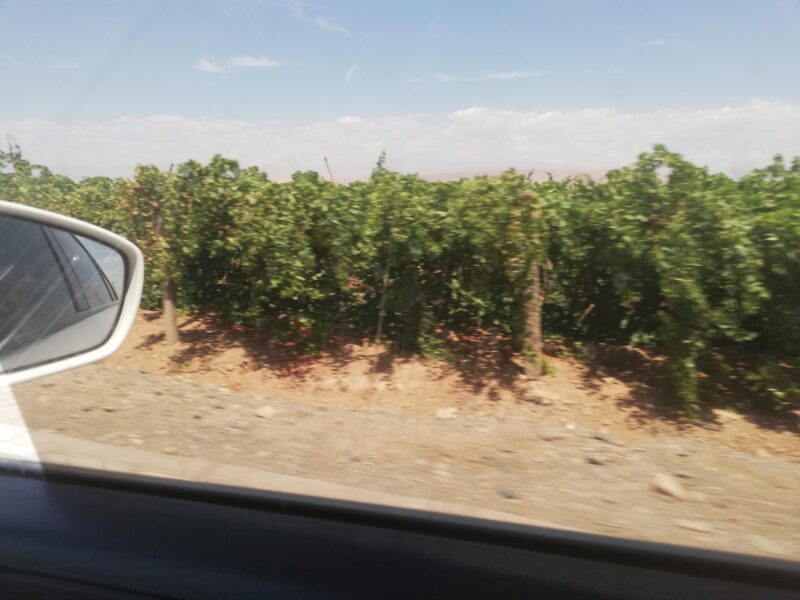
Vines. Turpan region is said to produce China’s best grapes, cultivated with snowmelt water from Flame Mountain

Honeydew melons lying in a field

Building where grapes are dried into raisins

Flame Mountain

I suspect they put up this wall to prevent us taking pictures without paying an entrance fee.
